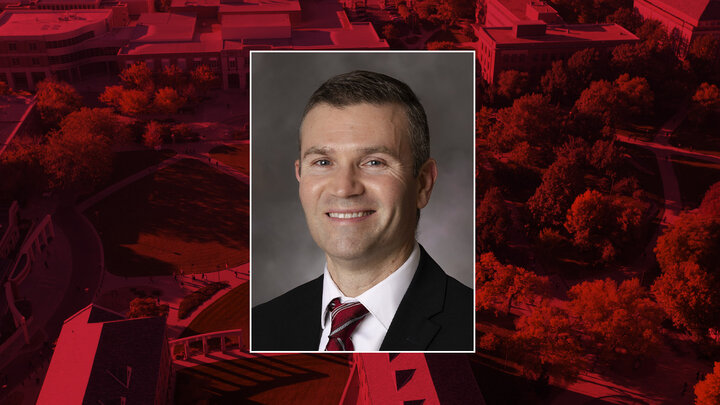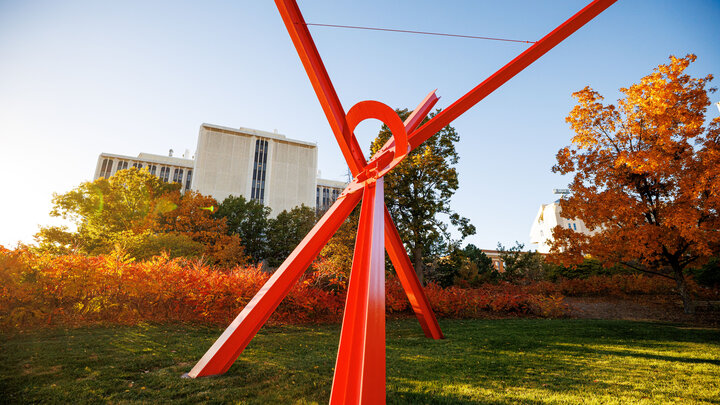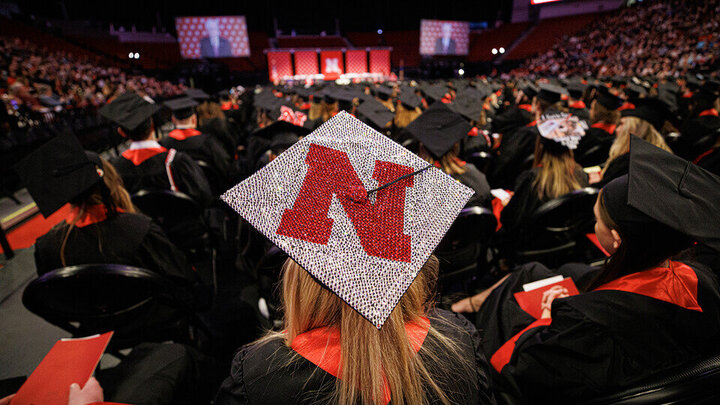Jay Storz, biological sciences:
- discovered that the yellow-rumped mouse lives higher than previously thought and studies how they adapt to extreme conditions. Stories appeared in Forbes, National Geographic, Popular Science, Telemundo and The Week in March.
• • •
Tim Gay, physics:
- solved a football physics conundrum. KLKN, The New York Times and Wall Street Journal published articles on the research in October.
• • •
Xiao Cheng Zeng, chemistry:
- helped explain a promising new droplet-based prototype for a small electricity generator from colleagues at the City University of Hong Kong. Stories on the research appeared in Popular Mechanics, SYFY Wire, Vice and several other media outlets.
• • •
Philip Schwadel, sociology:
- co-authored a study on emerging adults with same-sex attraction, organized religion, and prayer. Stories on the research appeared in Christian Century, Church Leaders, Phys.org, the Religion News Service, Science Codex and Scienmag.
• • •
James Le Sueur, history:
- wrote a July 11 guest column on his documentary “The Art of Dissent” for the Los Angeles Review of Books.
- The Boston Globe also highlighted the film in a Sept. 9 article on the Newburyport Documentary Film Festival, where it screened
- the film has garnered several awards, including best feature documentary at the Big Apple Film Festival.
• • •
Alumnus Jay Stafstrom and Eileen Hebets, biological sciences:
- co-authored a study on the ogre-faced spider. CNN.com published an article on the research, which was picked up by more than 50 media outlets.
• • •
Deirdre Cooper Owens, history:
- minority health disparities and how black America is responding to the pandemic (Blog Talk Radio, May 16)
- how the COVID-19 crisis might be a turning point in the fight against racial disparities in health care (The Nation, June 1)
- the legacy of J. Marion Sims, a doctor who experimented on enslaved women who could not consent (Montgomery Advertiser, July 30)
- the United States’ mixed history of treating racism as a public health issue (Quartz, Aug. 1)
• • •
Cara Burberry, Earth and atmospheric sciences:
- October in National Geographic, study on ancient rockfall in Scotland
• • •
Aaron Duncan, communication studies:
- October in The Conversation, Fast Company, the Houston Chronicle, Snopes.com, Yahoo News and more, how Twitter’s structure allows “logical fallacies” to thrive
• • •
Ingrid Haas, political science:
- October in Scientific American, research on political neuroscience
• • •
John Hibbing, political science:
- March in Washington Monthly, 2012 study suggesting conservatives are more attuned to potential threats
- September on CNN.com, guest column on bridging America’s political divide
- October in The New York Times, his new book, “The Securitarian Personality,” featured in David Brooks column
- October in Bloomberg Government, state legislative races to control Congressional redistricting
- November in the Los Angeles Review of Books, review of his new book
- November on Australian Broadcasting Corporation, what’s next for Trump supporters
• • •
Kevin Smith, political science:
- May in the Washington Examiner, October in The Hill, possibility of Nebraska’s 2nd Congressional District providing deciding vote in 2020 presidential election
- November in USA Today, America’s “toxic political environment.”
• • •
John Hibbing and Kevin Smith, both political science:
- January in USA Today and Men’s Health, November in USA Today, Upworthy and the Sandusky (Ohio) Register, 2019 study on politics making Americans sick
- October in Scientific American, research on political neuroscience
• • •
Debra Hope, psychology:
- March in Fast Company, overcoming phone call anxiety
- June in The New York Times, managing anxiety amid pandemic
• • •
Patrick Jones, history and ethnic studies, and Cynthia Willis-Esqueda, psychology:
- June in the Associated Press, George Floyd protests
• • •
Cynthia Willis-Esqueda, psychology:
- June in Vox, whether anger over systemic racism and police brutality would translate into action
• • •
Kate Lyons, biological sciences:
- April in Scientific American, study showing that mammalian fossils from current geologic age will consist almost entirely of humans, livestock and pets
- December in Phys.org, ScienceDaily, Scienmag and more—study she co-authored suggesting that persistence of large, land-dwelling mammals in Indian Subcontinent is related to their long coexistence there with homo sapiens and other human ancestors
• • •
Rupal Mehta, political science:
- January in The New York Times and BBC Radio’s “Up All Night,” consequences of United States’ assassination of Maj. Gen. Qassim Suleimani, Iran’s top military leader
• • •
Shab Mohammadi, biological sciences:
- July 3 in The New York Times, study showing caecilians’ mouths might be rimmed with venom-tipped teeth
- September in The New York Times and Smithsonian.com, study on Australia’s stinging trees
• • •
Chigozie Obioma, English:
- January in E! News, “An Orchestra of Minorities” named top-20 book to read in 2020
- February in Noted, his work and home country of Nigeria
- February in Literary Hub, “An Orchestra of Minorities” featured
- March in Fair Observer, his career, novels and colonialism in African literature
- March on ABC Radio’s “The Book Show,” how Nigerian culture influenced “An Orchestra of Minorities”
- May in Quartz, “The Fishermen” and “An Orchestra of Minorities” featured
- June 8 in the London Evening Standard, “An Orchestra of Minorities” featured
- June in Literary Hub, his favorite children’s books
- July in PEN America, Just Press Play playlist
- October on Blog Talk Radio, “An Orchestra of Minorities”
- November in The Atlantic, “The Fishermen” featured
- December in Broadway World and the Evening Express, BBC to broadcast radio version of “The Fishermen” play
- December in The Bookseller, Evening Express and more, selection as Booker Prize judge




